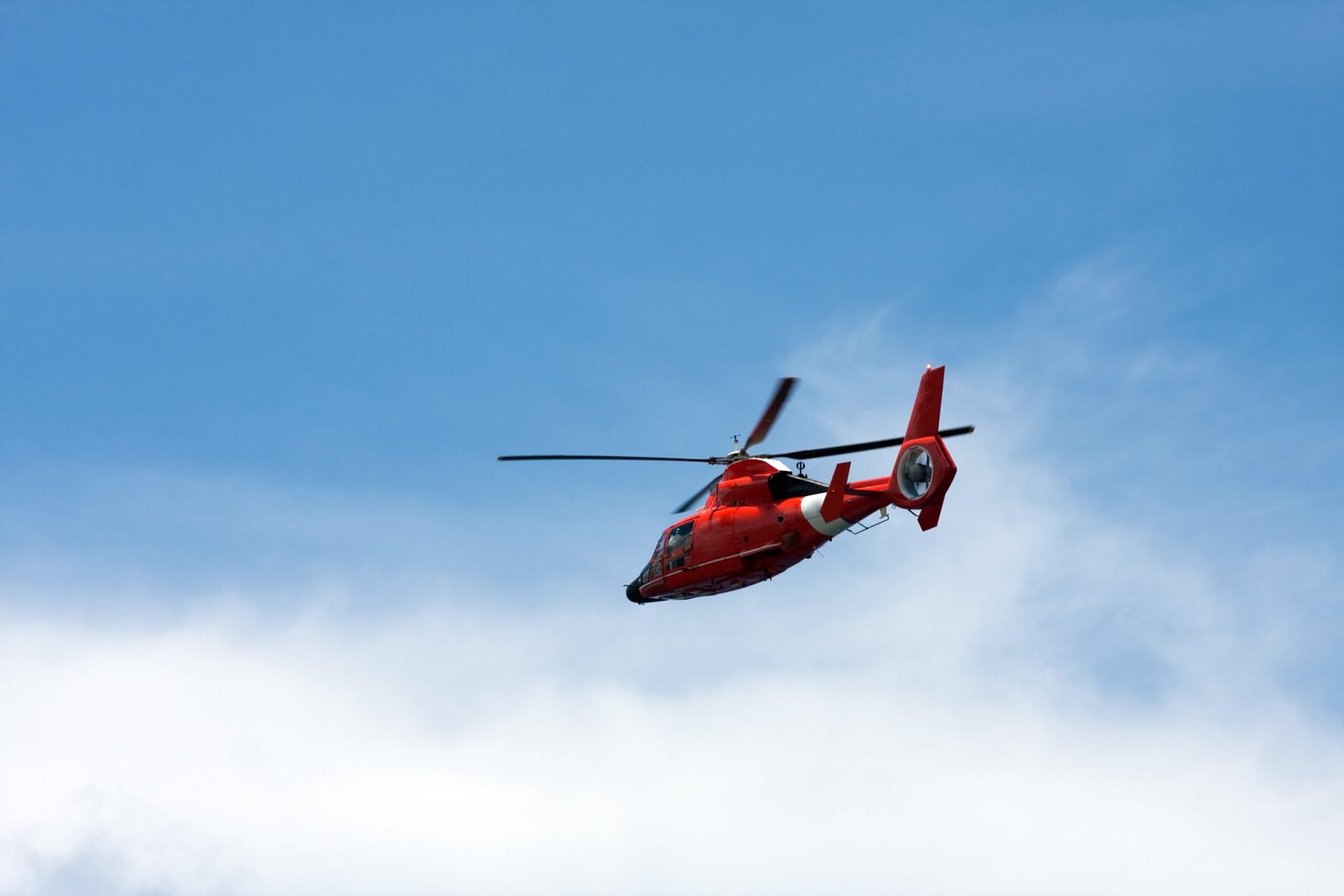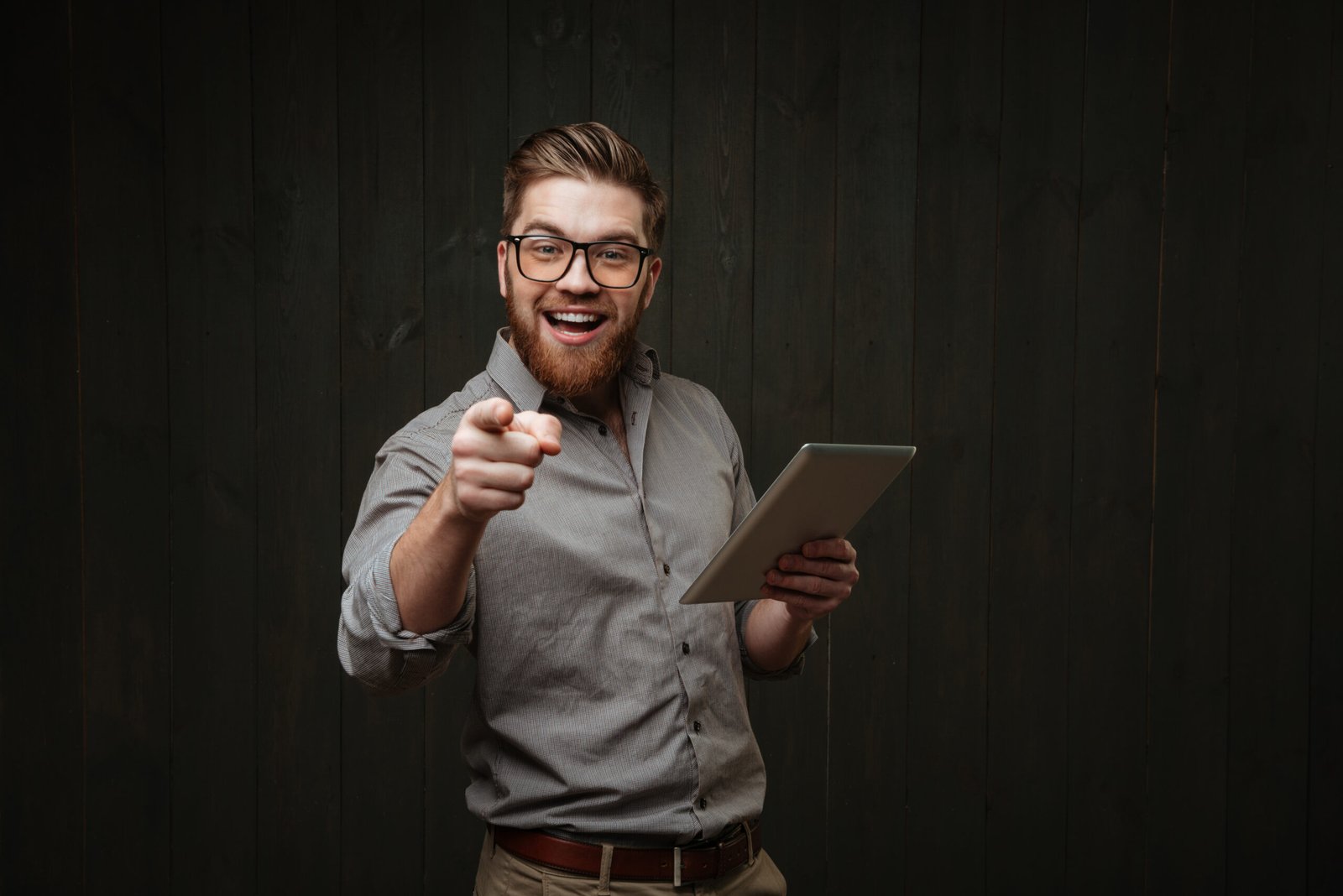Aviation
Soaring High: The Future of Aviation Technology
Aviation is a field that continuously evolves, driven by advancements in technology and an insatiable quest for efficiency and safety. As we soar into the future, it’s essential to understand not only the innovative technologies shaping the industry but also the educational pathways fueling this transformation. Let’s explore the types of aviation schools available today, some must-visit blogs and websites, and delve into FAA flight schools that are paving the way for aspiring aviators.
*Types of Aviation Courses**
When it comes to aviation education, there are various types of courses designed to cater to different interests and career paths. Here’s a snapshot:
1. **Pilot Training Programs**: These are typically offered by flight schools where students learn everything from basic flying skills to advanced navigation techniques. Courses can range from private pilot licenses (PPL) to commercial pilot licenses (CPL) and beyond.

2. **Aircraft Maintenance Engineering**: For those inclined towards mechanics, these programs teach students how to maintain and repair aircraft systems, ensuring safety and compliance with regulations.
3. **Aerospace Engineering**: This course focuses on the design and development of aircrafts or spacecrafts. Students delve into subjects like aerodynamics, propulsion systems, and materials science.
4. **Air Traffic Control Training**: Vital for maintaining safe airspace management, these courses prepare students for roles as air traffic controllers through simulations and real-world training experiences.
5. **Flight Attendant Training**: Catering primarily to customer service in the skies, this program covers emergency procedures, safety protocols, and passenger relations.
Each type of course offers unique insights into specific aspects of aviation, providing a well-rounded educational experience tailored to individual career aspirations.
*Essential Aviation Blogs & Websites**
Staying updated with industry trends is crucial for anyone involved in aviation. Here are some noteworthy resources worth following:
**AirlineReporter.com**: This blog provides insights on airline news with a focus on passenger experiences.
**The Air Current**: A site dedicated to in-depth analysis concerning commercial aviation trends.
**Flying Magazine**: An authoritative source covering pilot training tips alongside reviews on aircraft.
**AvGeekery.com**: A fun blog filled with stories from enthusiasts about all things planes.
On social media platforms like Twitter or Instagram, you can follow accounts like @AviationWeek or @aircraftspotting for real-time updates on industry developments.
*FAA Flight Schools & Simulators**
The Federal Aviation Administration (FAA) regulates flight training across America ensuring high standards in quality education at various accredited flight schools. These institutions often utilize state-of-the-art simulators that provide students with realistic flying experiences without leaving the ground.
For those looking for reputable FAA-certified flight schools, consider reaching out to:
1. **Embry-Riddle Aeronautical University** – Known globally for its aerospace programs.
2. **ATP Flight School** – Focused on fast-track professional pilot training.
3. **California Aeronautical University** – Offers both online classes along with hands-on training opportunities.
Simulation technology has come leaps forward too; devices like full-motion simulators now allow learners to practice emergency scenarios or complex navigational tasks safely before taking control of actual aircraft.
In conclusion, as we look up toward an ever-evolving horizon in aviation technology—be it through innovative learning pathways or cutting-edge tools—it’s clear that tomorrow’s aviators will be better equipped than ever before! Whether your dream involves soaring through clouds as a pilot or maintaining sophisticated machinery as an engineer—there’s never been a better time than now to embark on your journey within this exhilarating field!
Soaring High: The Evolution of Aviation Technology
Aviation has come a long way since the Wright brothers took their first flight in 1903. Today, it stands as one of the most significant and technologically advanced industries worldwide. As we look to the skies, it’s essential to understand how aviation technology has evolved and continues to shape our world. A critical component in this evolution is education—specifically, aviation schools that offer various courses tailored to aspiring aviators.
*Types of Aviation Courses**
Aviation schools provide a plethora of programs designed for different interests and career paths within the industry. At the core of these offerings are:
1. **Pilot Training Programs**: These include Private Pilot License (PPL), Commercial Pilot License (CPL), and Airline Transport Pilot License (ATPL). Each course builds on skills necessary for flying aircraft, from basic navigation to advanced maneuvering.
2. **Aircraft Maintenance**: Schools focusing on maintenance train students in airframe and powerplant (A&P) certification, ensuring planes remain safe and operational.
3. **Aviation Management**: For those interested in the business side of flying, these programs cover airline operations, regulatory compliance, and logistics management.
4. **Air Traffic Control**: Specialized training prepares individuals for managing air traffic safely and efficiently—a role crucial for maintaining order in busy skies.
5. **Avionics Technology**: With the rise of digital systems in aviation, avionics courses teach students how to install, repair, and maintain complex electronic systems within aircraft.
As technology advances rapidly, so too do the educational offerings at aviation schools—ensuring that students are equipped with cutting-edge knowledge.
*Exploring Aviation Resources Online**
In today’s digital era, there exists a wealth of resources available online for both seasoned professionals and novices alike. Here’s a curated list of noteworthy blogs, websites, and social media platforms dedicated to aviation:
**Blogs & Websites**:
– *Airliners.net*: A forum for aviation enthusiasts featuring stunning photography.
– *Flying Magazine*: Offers articles on flying techniques as well as insights into new technologies.
– *AVweb*: A source for news related to general aviation.
**Social Media Platforms**:
– Twitter accounts such as @FltPlan or @AeroNews can keep you updated on real-time developments.
– Facebook groups focused on pilot training or aircraft restoration foster community engagement.
– Instagram showcases breathtaking aerial photographs under hashtags like #aviationlovers or #pilotlife.
These resources not only enrich knowledge but also create an engaging community where individuals can share experiences and advice.
*FAA Flight Schools & Simulators**
For anyone serious about pursuing a career in aviation—or even just wanting to fly recreationally—the Federal Aviation Administration (FAA) has accredited numerous flight schools across the United States. These institutions adhere strictly to safety protocols while providing comprehensive training.
Additionally, simulators play an increasingly vital role in pilot education today. Virtual simulators allow students to experience realistic flying conditions without leaving the ground—enabling them to practice emergency procedures or learn navigation skills without risk. Many FAA-certified schools incorporate simulators into their curriculum for enhanced learning experiences.
In summary, as we soar high into the future of aviation technology—from innovative aircraft designs to sophisticated training methods—we must recognize the vital role education plays. Whether through traditional flight schools or immersive online resources, aspiring aviators have unprecedented opportunities at their fingertips that will propel them into a promising skyward journey!

Soaring Skies: The Future of Sustainable Aviation Technology
Aviation, an industry synonymous with innovation and adventure, is on the brink of a remarkable transformation. As we hurtle toward a more sustainable future, the integration of cutting-edge technology will redefine how we think about flying. But before we dive into this thrilling era, let’s explore how aspiring aviators can prepare for these changes through various educational paths and resources.
*Aviation Schools by Types of Courses**
Diverse educational programs offer a multitude of courses that cater to every facet of aviation. At the forefront are flight training schools, which primarily focus on preparing students for piloting careers. These institutions provide hands-on flight experience complemented by ground school instruction covering navigation, meteorology, and regulations.

Then there are aviation management programs that equip future leaders with knowledge in finance, operations, and logistics within the aviation sector. For those interested in aircraft maintenance, airframe and powerplant (A&P) schools deliver specialized training to ensure safety and efficiency in aircraft operations.
Furthermore, universities often offer degree programs in aerospace engineering, focusing on designing and developing aircraft technologies. This sector is crucial for fostering innovations that enhance sustainability—such as electric propulsion systems or advanced aerodynamics.
*Lists of Aviation Blogs, Websites, Social Media Sites**
Staying informed is vital in an ever-evolving field like aviation. Fortunately, numerous blogs and websites provide insights into current trends and advancements. Noteworthy blogs include “Airliners.net,” where enthusiasts share photographs alongside discussions about airline operations worldwide. Similarly, “The Points Guy” offers travel tips while emphasizing sustainability initiatives within airlines.
For those who prefer concise updates through social media channels, Twitter has become a hub for aviation news; accounts like @FlightGlobal share real-time information on industry developments. Additionally, Instagram accounts such as @aviationdaily showcase stunning imagery from around the globe while highlighting eco-friendly practices adopted by various airlines.
YouTube also hosts a plethora of channels dedicated to aviation topics—like “Mentour Pilot,” wherein professional pilots discuss experiences while also addressing the importance of environmental stewardship in their profession.
*FAA Flight Schools/Airplane Schools/Simulators**
When it comes to official flight training in the United States, FAA-approved flight schools are pivotal. They adhere to strict regulations ensuring quality education for aspiring pilots. Some renowned institutions include Embry-Riddle Aeronautical University and ATP Flight School—both known for their comprehensive programs that combine practical flying experience with theoretical knowledge.
Additionally, simulation technology is revolutionizing pilot training methodologies. High-fidelity simulators allow students to practice complex maneuvers without leaving the ground—a critical aspect when considering emergency scenarios or learning new aircraft systems. Many modern flight schools incorporate simulation time as part of their curriculum to enhance overall proficiency while minimizing costs associated with actual flight hours.
In conclusion, as we look skyward towards sustainable aviation’s bright future filled with electric planes and eco-efficient technologies, it’s imperative that tomorrow’s pilots receive robust training through diverse educational avenues available today. With countless resources at their fingertips—from insightful blogs sharing industry wisdom to FAA-certified schools providing top-notch instruction—aspiring aviators are well-positioned to not just witness but actively participate in this exciting new chapter of aviation history! The sky may not be the limit after all; instead, it could be just the beginning!
Aviation Wonders: Exploring the World’s Most Extraordinary Airports
The world of aviation is an ever-evolving marvel, a tapestry interwoven with technology and human ingenuity. As we soar through the skies, our journey begins even before we board those sleek aircraft. Have you ever considered how training for such adventures unfolds? Aviation and technology training, particularly through sophisticated simulators, plays a crucial role in preparing pilots for the challenges they face. With realistic scenarios and immersive environments, these simulators allow aspiring aviators to hone their skills without leaving the ground.
But let’s not forget that the aviation community extends far beyond just pilots and planes. There exists a wealth of information available online for enthusiasts eager to learn more about this fascinating field. If you’re looking to dive deeper into aviation culture or perhaps stay updated on trends and news, consider exploring popular aviation blogs and websites like AirlineReporter, The Points Guy, or AOPA (Aircraft Owners and Pilots Association). Social media platforms are also teeming with vibrant communities; join hashtags like #aviationphotography on Instagram or follow Twitter accounts dedicated to flight updates.
For those seeking structured education in aviation, online courses abound! Ground schools offer comprehensive programs covering everything from air navigation to meteorology. Many well-respected institutions provide accredited online courses catering to different levels of expertise—whether you’re a novice pilot or someone looking to expand your knowledge base as an airline operations manager. Organizations like Embry-Riddle Aeronautical University and Purdue University Global have made significant strides in delivering quality online education tailored for future aviation leaders.
As one delves deeper into this field, career opportunities become increasingly enticing. Pilot jobs remain at the forefront of many people’s ambitions, but there are numerous paths within the industry—ranging from air traffic control positions to roles in aircraft maintenance engineering. The Federal Aviation Administration (FAA) website is a treasure trove of resources where potential pilots can find valuable links about licensing requirements, medical certifications, and ongoing career developments.
In recent years, drones have emerged as exciting players within aviation’s expanding universe. These unmanned aerial vehicles (UAVs) have revolutionized various sectors—from agriculture monitoring to search-and-rescue missions—while also sparking new discussions around regulations and safety standards. The FAA has been proactive in establishing guidelines for drone usage; it’s essential for operators to familiarize themselves with these rules if they wish to take flight responsibly.

So why should you explore these extraordinary airports worldwide? Each terminal tells its own story—a journey marked by cultural significance, architectural brilliance, or sheer operational complexity. Think of Changi Airport in Singapore with its stunning butterfly garden or Incheon International Airport’s breathtaking art installations! Airports serve as gateways not only across geographical boundaries but also into realms rich with history and adventure.
As we reflect upon the wonders of aviation—from rigorous training methods and educational resources to groundbreaking technologies like drones—we recognize that every aspect contributes profoundly to our shared experience as global travelers. So buckle up! The sky awaits your exploration!
From Vintage to Modern: A Journey Through Aviation History
Aviation, a realm where dreams take flight, has witnessed an extraordinary evolution from its humble beginnings in the early 20th century to today’s high-tech marvels. As we traverse this fascinating journey through aviation history, it’s crucial to recognize how technology and training have reshaped the industry, paving the way for aspiring pilots and enthusiasts alike.
Let’s start with technology training — a cornerstone of modern aviation. Simulators have become indispensable tools for pilot training. Gone are the days when novice aviators would take their first shaky flight in a real aircraft. Today’s simulators offer an immersive experience that mimics various flying conditions, from serene skies to stormy turbulence. These advanced systems allow trainees to familiarize themselves with aircraft controls and emergency scenarios without leaving the ground, significantly enhancing safety and confidence.
For those looking to dive deeper into aviation knowledge, numerous online resources exist. Blogs like “The Pilot’s Lounge,” “AirlineReporter,” and “Flying Magazine” provide insights into industry trends, pilot experiences, and technological advancements. Websites such as AOPA (Aircraft Owners and Pilots Association) offer up-to-date information on regulations and safety tips while fostering a vibrant community of aviation enthusiasts. Social media platforms like Instagram and Twitter have also become hotspots for aviation lovers. Accounts such as @aviationdaily showcase stunning aerial photography alongside news articles that keep followers informed about current events in aviation.

When it comes to formal education, online courses and ground schools have revolutionized pilot training accessibility. Platforms like Coursera and Udemy feature comprehensive courses designed by industry professionals that cover everything from basic aerodynamics to advanced navigation techniques. Ground schools prepare aspiring pilots for written examinations required by regulatory bodies like the FAA (Federal Aviation Administration). These programs offer flexibility for busy individuals balancing work or family commitments while pursuing their dream of soaring among the clouds.
Speaking of careers in aviation, job prospects abound! The demand for qualified pilots continues to grow due to increasing air travel worldwide. Airlines are on the lookout for well-trained candidates who can seamlessly transition from simulators to cockpits. Opportunities don’t stop at airlines; corporate jets, freight carriers, agricultural aviation — each presents unique career pathways catering to diverse interests.
In recent years, drones have emerged as game-changers within both recreational activities and commercial enterprises. These unmanned aerial vehicles are no longer just toys but tools used in various fields including agriculture, photography, delivery services, and even search-and-rescue missions! With drone technology advancing rapidly, regulatory bodies like the FAA are continuously updating guidelines regarding drone operation ensuring safety remains paramount.
To stay informed about these developments or seek guidance navigating through endless opportunities within the field of aviation consider visiting official FAA links which provide essential resources ranging from licensing requirements to safety regulations. Whether you’re an aspiring pilot eager for guidance or a seasoned professional seeking ongoing education—these resources connect you directly with valuable information at your fingertips.
In conclusion, as we reflect upon our journey from vintage biplanes taking flight over open fields to today’s sleek jetliners soaring above urban landscapes; one thing is certain—aviation will continue evolving at an unprecedented pace fueled by innovation in technology coupled with passionate individuals committed towards progress within this thrilling industry! So buckle your seatbelt; the future of flight awaits!





